Three weeks ago (on 7th and 8th October), we attended (and I spoke at) the NEMdev conference in Brisbane, and it was a good experience:
1) Dan Lee’s already written highlighted the ‘Three themes from NEMdev 2025’ that jumped out to him
… at some point I might add some more thoughts, in a separate article (but that’s dependent on time permitting).
2) With respect to my talk, I covered a few things:
(a) touching on analysis formerly completed for GenInsights Quarterly Updates;
(b) and including some considerations about the draft report of the Nelson Review …
… but unfortunately both Tim Nelson and Phil Hirschhorn could not stick around for my graveyard shift at the end of the conference – so hoping these thoughts here add a bit more context for the Panel’s consideration.
3) So I had promised the audience I’d post more details in subsequent articles:
(a) A little over a week ago, we’d collated some thoughts (including those presented at NEMdev) and posted ‘Some suggestions for the Nelson Review panel to consider (with respect to Forecasting) following review of the Draft Report’
(b) This article follows on now (touching on different things that we strongly urge the Panel to (re)consider), because of several reasons including:
i. This week I’ll be at All Energy 2025 in Melbourne, so will be otherwise engaged
… these sorts of considerations might feature in presentations and conversations
ii. I’m also aware that Tim Nelson and the team are pressing to have a Final Report released by the end of the year (and possibly as soon as late November). So I have to get some skates on for these thoughts to have any bearing.
(c) And, time permitting, there’ll be other thoughts in subsequent articles – including with respect to concerns about ‘the rise of the machines’
… which I see as including but not limited to the possibilities raised by the draft Report about algorithmic collusion.
What’s the concern about invisible responses (w.r.t. the draft Nelson Review report)
On p44/239 of the draft report from the Nelson Review, the concern about ‘Less visible and less scheduled resources’ was called out:
So far, so good … we also share similar concerns (and have written about them before).
However, as noted at NEMdev 2025, we wonder whether the Panel has not fallen victim to Villain #5 in ‘not focusing on the real problems’
… or, at the very least, not seeing the full scope of the problems that we’re increasingly already experiencing because of ‘Less visible and less scheduled resources’!
For those who were not at NEMdev 2025, and who aren’t reading between the lines, I’m speaking with respect to certain aspects of Recommendation 2 (from p79/239) in the draft report, which reads:
Recommendation 2: Energy ministers should require a broader range of price-responsive resources to be visible or dispatchable to participate in price formation
It’s not what’s on those two pages that … indeed, the suggested progression in Figure 33 seems to be a laudable goal (p87/239) :
So, what are our concerns with the Recommendation, some readers will be asking … well, they are two-fold:
Concern #1 – Whiplash via ‘bait and switch’ from ‘encourage and reward’ to ‘mandate’?
Surely it can’t be just me who suffered whiplash when reading the progression from the reasoned thinking and laudable goals up until p91/239 and the quite concerning change in rhetoric that began at p92/239, ….
1) This started with Recommendation 2A on page 92 as follows:
‘2A: Leverage the VSR participant categories established under the IPRR dispatch mode framework to give effect to Recommendation 2B’
As noted on the image, the concern is that:
(a) The assumption that the IPRR framework is a ‘fit for purpose’ framework for ‘encouraging and rewarding participation’ might seem an overstatement, given that it’s still ~19 months away from go-live.
(b) That’s especially the case, when considering:
i. The AEMC Rule Change explicitly included provision that it should be voluntary
ii. Which was a factor (along with the long remaining lead time) in the scant real consideration we’ve given to this point to this change:
> either during the AEMC’s own Rule Change deliberations (which was completed with the rule change)
> and also through the AEMO’s own detailed design process (which remains underway).
iii. I wonder how many other stakeholders have also taken a similar approach?
2) Where this became particularly jarring for me was on (p94/239) when reading Recommendation 2B, which reads:
‘2B: Energy ministers should propose a rule change to the AEMC requiring that, by 2030, various forms of price responsive resources should be visible or dispatchable in a relevant participant category, with this obligation falling on the relevant participant’
Wait, what? … We’ve gone from a desire to ‘encourage and reward’ these resources to participate to recommending that we Mandate that They Do in the space of 3 pages in the draft report!
I wonder how many other readers suffered whiplash as a result?!
We’ll explore this more – in a subsequent article.
Concern #2 – have we missed ‘the Elephant’ in the room?
Back on 30th September 2025 we posed these ‘3 high-level questions, for considering the draft report of the Nelson Review’ … and I’d like to call attention to question 2 at present:
With respect to ‘the elephant in the room’ that the draft Report is silent on what seems (to us) to be some rapidly escalating challenges with respect to the rise of Semi-Scheduled resources – which:
1) Have already been seen to be causing an increasing number of problems for frequency control
… see, for instance, the list of exceedances catalogued in ‘Highlighting particular (frequency and/or AggROT) events through 2024 and 2025’ and note that the increasingly common
2) These problems seem certain to only escalate in future … unless the growth in, and operations of, the Semi-Scheduled category change in some pretty substantial ways.
3) However the Nelson Review Panel seems to either:
(a) Consider its out-of-scope for their considerations; and/or
(b) Not recognise that it’s as significant and growing issue
We’ll explore both of these concerns further (separately) in subsequent articles, but just wanted to flag both at this point – and leave you with some additional context below.
A reminder … what happens, when Supply ≠ Demand
With respect to the concerns called out by the draft Report about ‘Less visible and less scheduled resources’, it’s worth reminding readers that (on 10th October 2025, after raising these considerations at NEMdev 2025), I wrote the reminder ‘What happens, when Supply ≠ Demand?’:
The point of that article was to help remind readers that any invisible and unexpected responses are firstly experienced through frequency instability … and these instabilities (or concerns about them) flow through to economic impact.
… that’s why we have been investing increasing effort in recent years in collating a series of analytical articles assessing the trend of Frequency Performance.
In a follow-on article to help elaborate on Concern 1 and Concern 2, we’ll look to expand on this scope of Table 1 over p89, 90 and 91 of the draft report to incorporate a broader list of the types of responses, including those noted on 8th October, when I spoke at the NEMdev conference in Brisbane:
… and some of this might also prelude into concerns about ‘the rise of the machines’.
Pre-reading, with respect to Invisibility
Prior to that next article, readers might like to reflect that (back in June 2021) we introduced the concept of ‘The Invisible Man’ being Villain #8 … with this villain manifest in a number of different incarnations across the supply-demand balance:
… and that’s where we will leave you for now (perhaps we can speak, about this or other things, at All Energy 2025?).


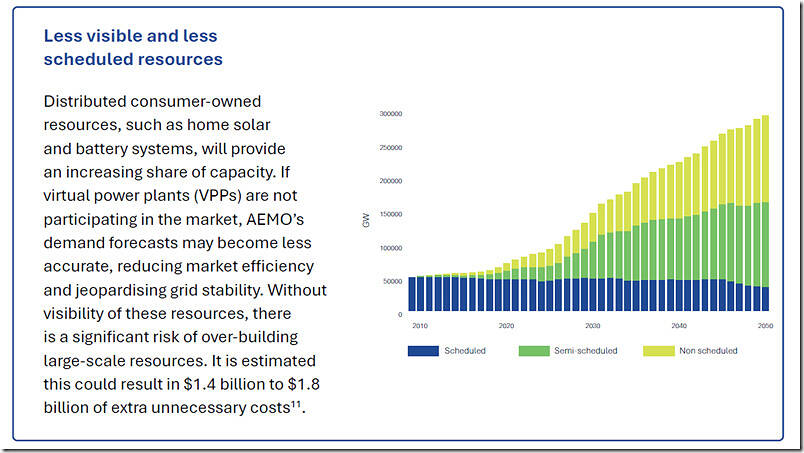
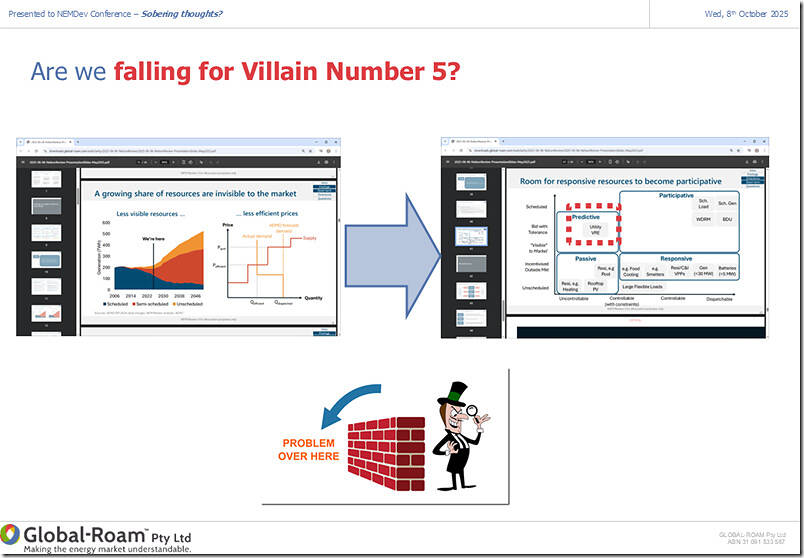
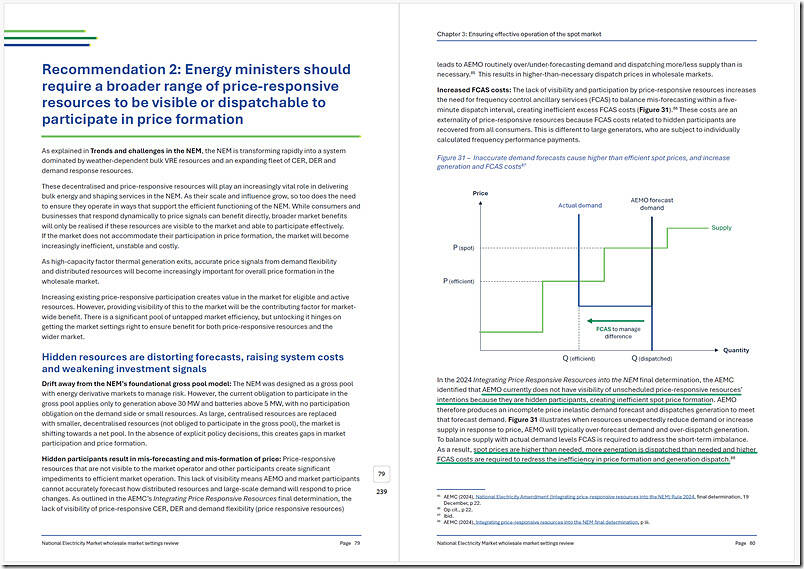
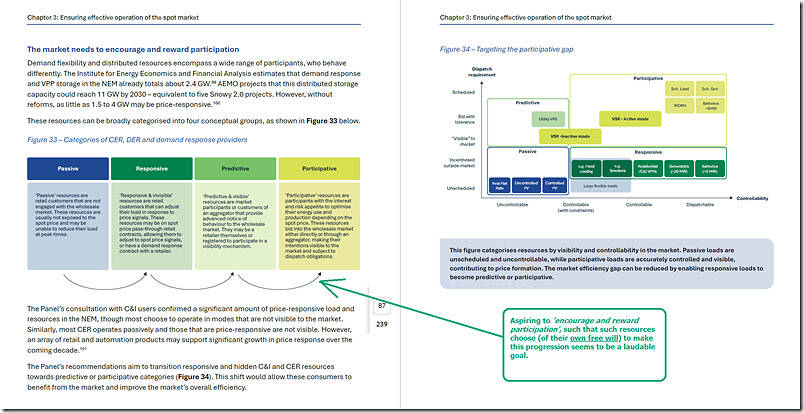
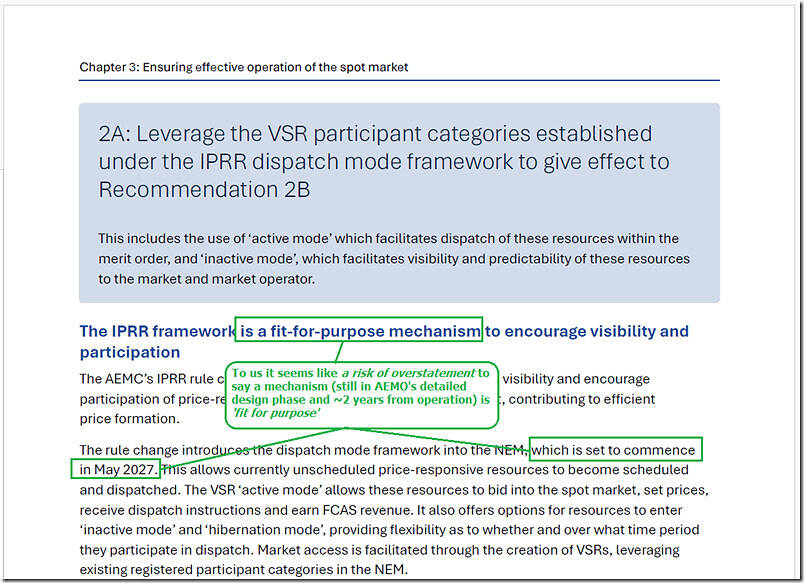
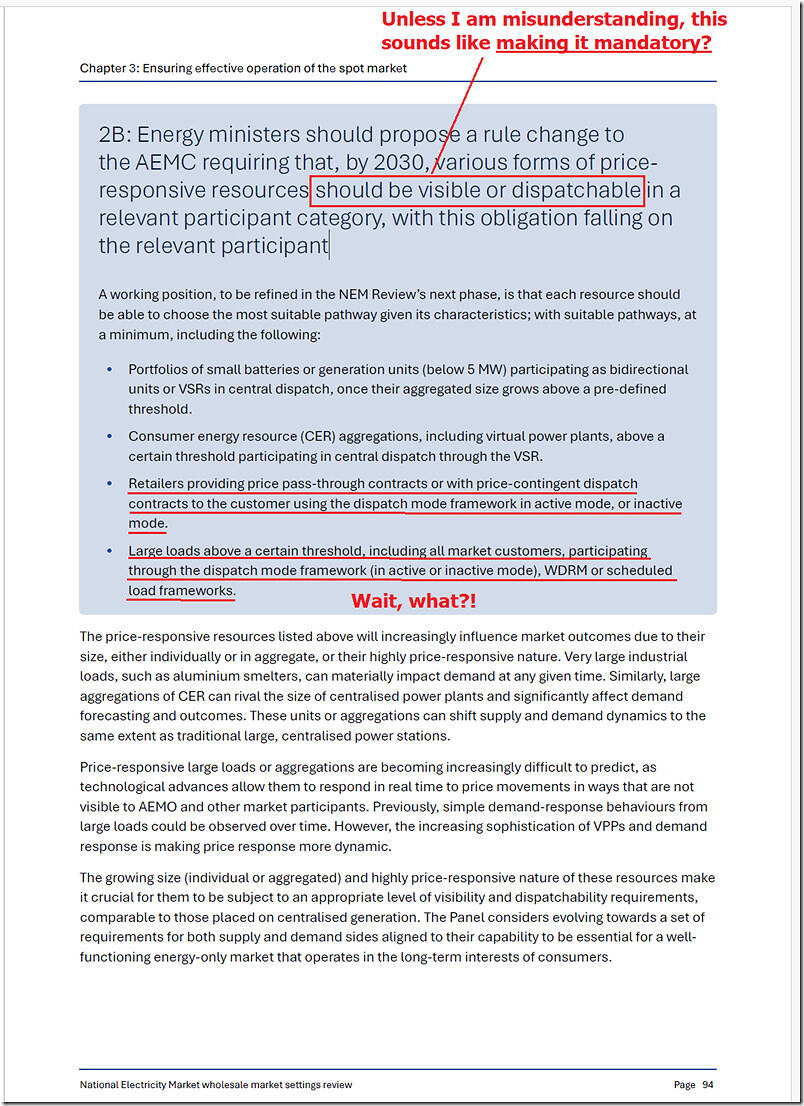
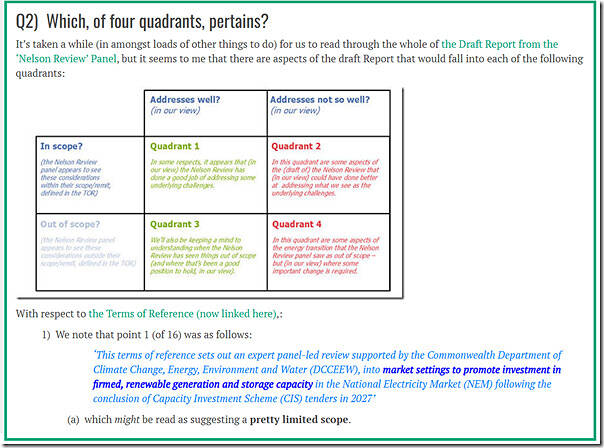
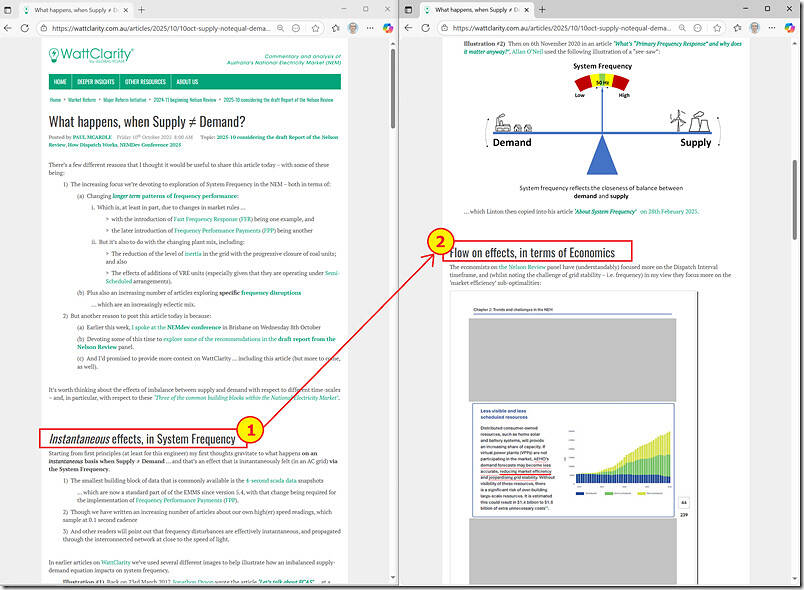
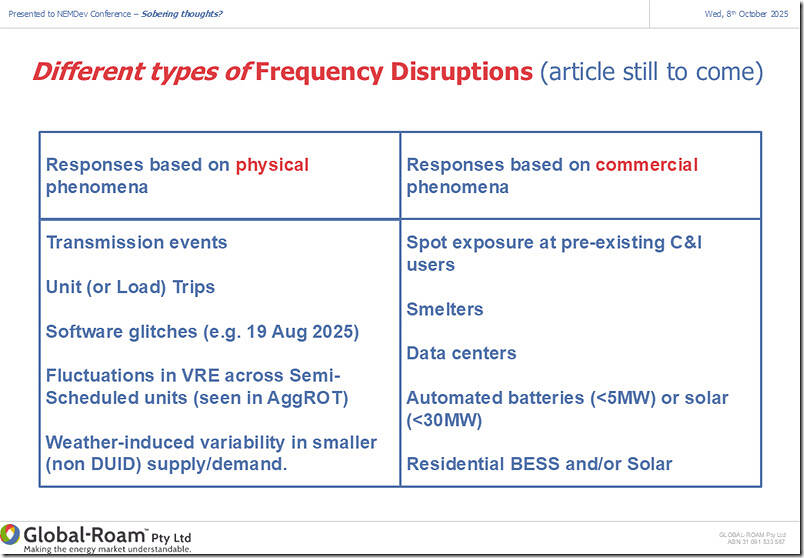
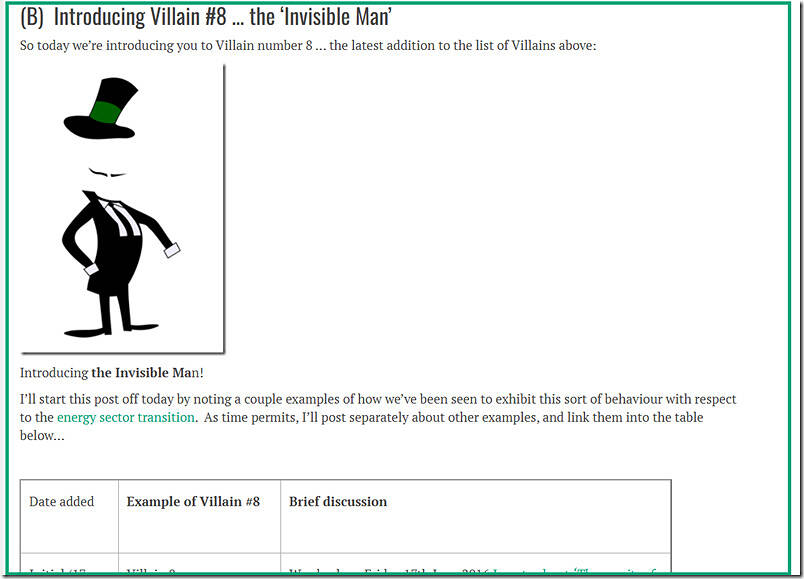
Suggest that recommendations from the Nelson review will be binned unless Bowen gets it legislated before the next election.